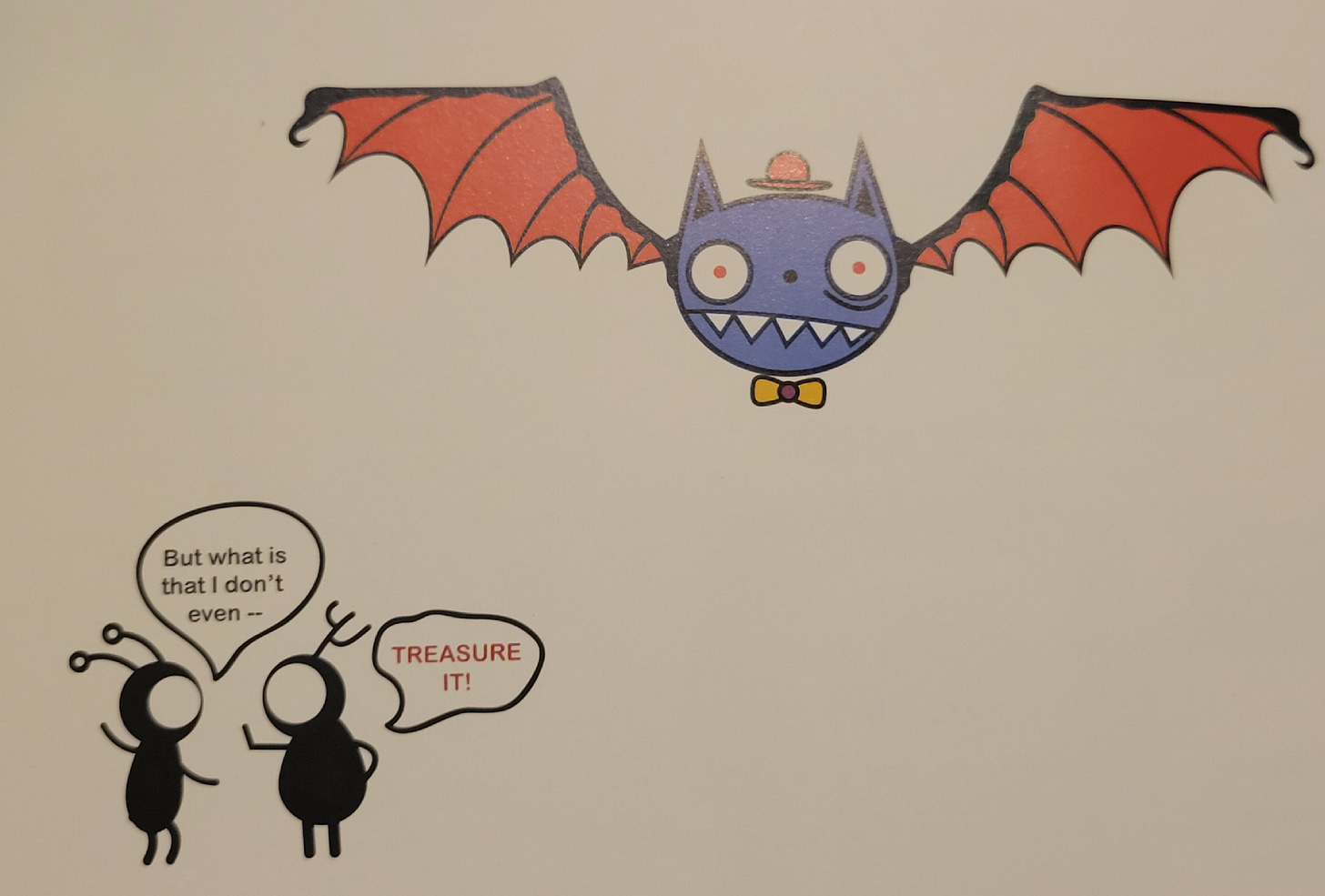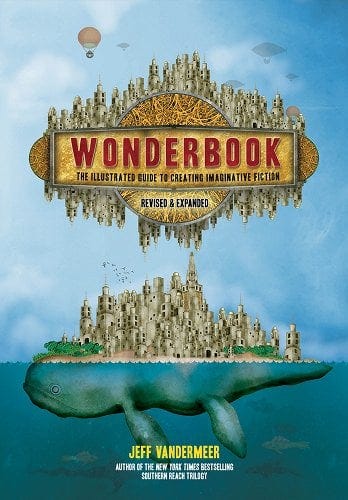The Greater and Lesser Mysteries
Wonderbook Chapter 2: Storytelling from behind the locked door of the imagination
Note: This is the second of a seven-part1 summer read along of Jeff Vandermeer’s Wonderbook: The Illustrated Guide to Creating Imaginative Fiction. Grab a copy of this gorgeously illustrated book and read along with us or simply enjoy the essays inspired by this beautiful meditation on the imaginative life.
In Chapter Two—“The Eco System of Story"—Jeff Vandermeer offers up a fun overview of the various shapes stories can take—he calls them “narrative life forms”—and provides an overview of the building blocks of fiction, from straightforward elements like setting to more nebulous elements like style and voice. As overviews go, this is rock solid with a touch of whimsy, but where it truly shines is the section on the the Greater and Lesser Mysteries.
These mysteries—voice, tone, structure, theme, form—are elusively non-quantifiable elements that serve as something like the electrons of fiction. They hum with potential energy, they attract and repel readers, and they can be felt but not seen2. Vandermeer also discusses the difference between creative imagination and technical imagination, where creative imagination is that once-upon-a-time-feeling that comes with dreaming up a premise or a character or—on a great day—both, while technical imagination is the imagination you use to shape the mess creative imagination leaves behind.
“Over time, because of practice, your technical imagination automatically shares information with your technical imagination—a transference similar to the idea of muscle memory. As a result, you will eventually find that some aspects of correction you used to have to impose on your narrative during revision already exists in some form in the rough draft. Like most things in creative writing, this process is not mathematically precise.”
Have you ever felt this kind of muscle memory in your writing practice?
It sounds an awful lot like what some writers call flow, in which case I’ve felt it a few times, and it feels a bit like improvising my lunch salads every day.3 I pull out my veggies from the fridge, grab a large plastic container with a lid, and start by tossing a base of greens into that container—some days that base is mostly spinach, some days it’s greens leftover from dinner, some days it’s microgreens. Then I move onto handfuls of a selection of veggies that varies from week to week depending on what I’ve bought for produce that week. When the container is filled with veggies, I add the fun bits. For example, on a day I want sweetness, I might toss in a few peanuts, but on a day I’m craving creaminess, I might toss in avocado instead. Then I sprinkle the lot with whatever herbs and spices I’m feeling that day (nutritional yeast is a favorite), drizzle the herbs with olive oil, snap the lid on and shake, shake, shake.
Writing in flow feels like that. Just clicking along on my keyboard doing the literary equivalent of building a salad by choosing orange bell pepper over carrots, say, or pepitas over peanuts that results in a draft salad that’s tastier than the sum of its parts.
As I confessed in the previous post, I’m flirting with the idea of a series on the role of intuition in writing, so I’m currently listening to Malcom Gladwell’s Blink where he tells the story of a retired tennis coach who correctly predicted something-like twenty double faults—when a tennis player misses two serves in a row—in real time. Apparently after a player missed one serve, this coach could tell if the player would miss the second just by watching the way the player tossed the ball into the air. The coach was never wrong, but he could also never fully identify how it was he knew a double fault was imminent. He spent a lot of time and energy studying tapes to try and figure out how he knew but came up with nothing.
In the end, he concluded that he knew when a player would double fault, but he had no conscious idea how he knew.
The wackiest part of the story is that science doesn’t even know how he knows.4
Gladwell calls this phenomenon the locked door of consciousness.
We know things but we don’t know how we know them.
The locked door sounds a whole heck of a lot like how writing inspiration works. You have a sudden insight that the book should be set in LA instead of New York or one of the characters in the growing cast of your rough drafts suddenly claims the story as her own or you suddenly see that the reason you can’t find the answer to a plot point is because the story should have never arrived at that juncture in the first place.
When I was stumped by the plot of my current novel in progress early in the drafting, I got so desperate to untangle the knots, I opened up a fresh document and wrote myself a letter of complaint from my main character. To my enormous delight, this woman had a grumpy AF voice that not only demanded to tell her own story, but also had a lot of loud and ugly opinions about all the boneheaded choices I’d made in telling her story to that point. And she had even louder opinions about what her story actually was, so I sat up and took notes, and I’m still working on bringing the story in those notes to life today.
I don’t for one second believe that I was visited by my main character, but I do believe that some combination of desperation and this playful exercises cracked open the locked door in my conscious long enough to unblock the story.
I don’t fully understand the locked door of consciousness—if Vandermeer files it under “the greater and lesser mysteries” and all of science has yet to crack the case, what hope do I have to understand it?—but I like to imagine the keyhole in the locked door of the imagination as the funnel where every word we’ve ever read drains. Every character that broke our hearts. Every naughty giggle. Every beautiful turn of phrase that made us hold our breaths as we read. Every movie we hated. Every documentary that broadened our world. Every single story we wished we’d written as well as all the stories we actually did write. All of it drips through the keyhole, collects into a mass of narrative energy that zaps us with inspiration at intervals we also don’t understand.
That locked door can be enormously frustrating, of course, but on the best days just knowing it’s there is enough enough to make my writing life feel rich and full of wonder. And if that’s not proof of the existence of these greater and lesser mysteries Vandermeer’s talking about, I don’t know what is.

Seven or more. These chapters are rich, long, and dense. I may have to split a few chapters across a couple newsletters to do them justice.
By the naked eye at least.
I’m in the middle of my 100 salads of summer challenge, so bear with me if I’m starting to see the world through a salad lends.
Or at least they don’t know before the halfway point I’ve read to in the book.



